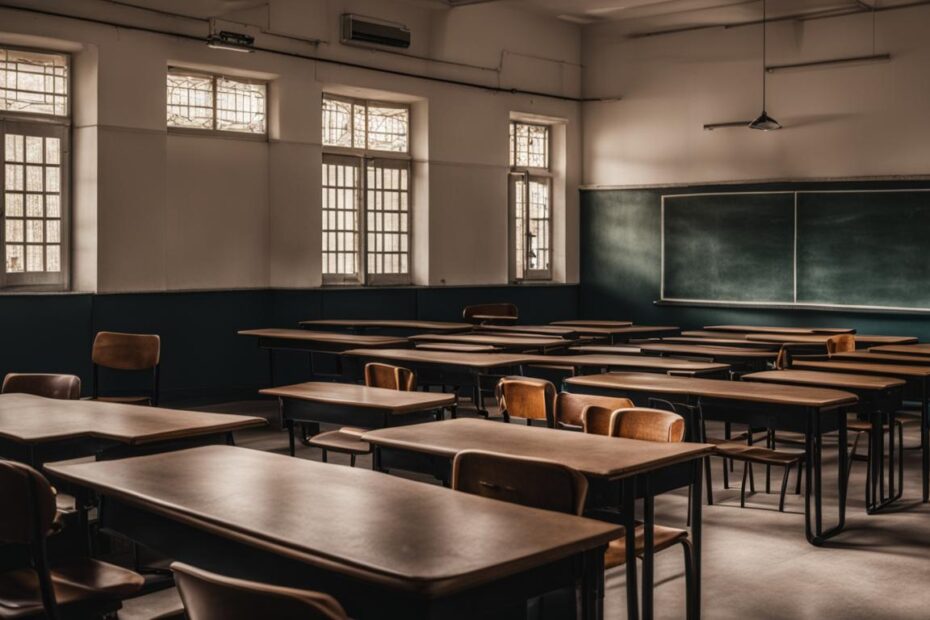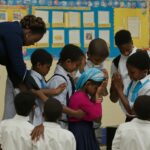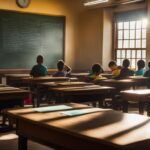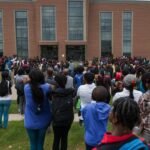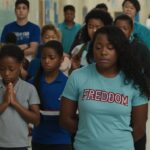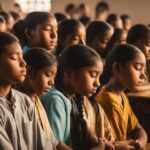The removal of prayer from schools holds a significant place in American history, marking a turning point in the relationship between religion and education. This article delves into the genesis and impact of this decision, shedding light on the historical context and the controversy surrounding the separation of church and state.
Key Takeaways:
- The removal of prayer from schools in the mid-20th century was a watershed moment in American education.
- The Supreme Court played a pivotal role in declaring state-sanctioned prayer in public schools as a violation of the First Amendment.
- The debate over prayer in schools is rooted in conflicting views on religious freedom and the separation of church and state.
- The absence of prayer in schools led to legal challenges, protests, and significant changes in the educational landscape.
- Understanding the historical context and the concept of separation of church and state is crucial in comprehending the removal of prayer from schools.
The Role of the Supreme Court in Prayer in Public Schools
The Supreme Court has played a significant role in shaping the presence of prayer in public schools through a series of landmark rulings. These decisions have had a profound impact on the intersection of religion and education in the United States. Two notable cases, Engel v. Vitale in 1962 and Abington School District v. Schempp in 1963, established the precedent that state-sanctioned prayer in public schools violates the Establishment Clause of the First Amendment.
In the Engel v. Vitale case, the Supreme Court ruled that the recitation of a state-sponsored prayer in public schools was unconstitutional. The court argued that the establishment of religion through prayer in schools infringed upon the individual freedom of conscience and religious liberty, demonstrating a clear separation of church and state. This decision marked a turning point in the interpretation of the First Amendment and set the stage for subsequent rulings on prayer in schools.
In Abington School District v. Schempp, the Supreme Court extended its ruling on prayer to include Bible reading as well. The court determined that mandatory Bible readings in public schools were also a violation of the Establishment Clause. These rulings affirmed the principle of secularism in public education, ensuring that schools remain neutral in matters of religion and protect the rights of students of all faiths or no faith at all.
| Landmark Supreme Court Rulings on Prayer in Public Schools |
|---|
| Engel v. Vitale (1962) |
| Abington School District v. Schempp (1963) |
These Supreme Court rulings set the stage for the exclusion of prayer from school activities, establishing a clear boundary between religion and public education. While the decisions have been praised by proponents of the separation of church and state, they have also sparked ongoing debate and controversy over the role of religion in the public sphere and the rights of students to express their faith in schools.
The Debate over Prayer in Schools
The removal of prayer from schools has been a subject of heated debate and controversy in the United States. Supporters of prayer argue that it is a fundamental aspect of religious freedom and moral values, while opponents believe that it violates the principle of the separation of church and state and infringes upon the rights of religious minorities. This ongoing debate raises important questions about the role of religion in public education and the boundaries between personal belief and institutional practice.
The Case for Religious Freedom in Schools
Proponents of prayer in schools argue that it is a constitutionally protected expression of religious freedom. They believe that students and faculty should be allowed to openly practice their faith and engage in prayer as a personal and communal act. They argue that prayer can be a source of comfort, guidance, and moral grounding for individuals, and its exclusion from schools denies students the opportunity to freely exercise their religious beliefs.
The Case for the Separation of Church and State
On the other side of the debate, opponents of prayer in schools emphasize the importance of maintaining a secular educational environment. They argue that public schools should be neutral spaces that respect the diversity of religious beliefs and ensure that students of all faiths, or no faith, feel included and valued. They contend that state-sanctioned prayer in schools can be coercive and alienating to non-religious students or those from minority religious backgrounds.
This ongoing debate highlights the complexity of balancing religious freedom with the principles of a secular public education system. While the Supreme Court has made rulings on prayer in schools, the controversy continues to be a contentious issue that raises important questions about the rights of individuals and the role of religion in American society.
The Impact of Prayer Removal in Schools
The removal of prayer from schools had far-reaching consequences for the education system, sparking a range of reactions and shaping the landscape of public education in the United States. While some viewed the ban on prayer as a necessary step towards upholding the separation of church and state, others lamented the loss of a religious tradition that they believed provided moral guidance and a sense of community.
One significant impact of the prayer ban was the increase in legal challenges from religious groups who felt that their freedom of expression was being curtailed. These lawsuits often centered around the rights of students or teachers to engage in religious activities or express their beliefs in the school setting. In some cases, these challenges resulted in court rulings that clarified or expanded the boundaries of religious freedom in schools.
Another consequence of prayer removal was the decline in religious influence within public schools. With the absence of prayer as a formalized practice, schools became more secular environments, focusing on education without a religious or spiritual component. This shift led to the rise of alternative education options such as homeschooling and private religious schools, where parents and students could prioritize religious teachings alongside academic learning.
| Consequences of Prayer Removal in Schools | Description |
|---|---|
| Legal challenges | Lawsuits from religious groups challenging the ban on prayer, resulting in court rulings on religious freedom in schools. |
| Decline in religious influence | The absence of prayer in schools led to a more secular educational environment, prompting the rise of alternative education options that prioritize religious teachings. |
Overall, the impact of prayer removal in schools continues to shape the educational landscape, influencing discussions on religious freedom, the role of religion in public institutions, and the rights of students and teachers to express their beliefs. The ongoing debate surrounding prayer in schools reflects the broader tension between religious freedom and the principles of a secular democracy.
Historical Context of Prayer in Education
Prayer has a rich history in American education, dating back to the early days of the nation. In fact, prayer was an integral part of the educational experience for many students throughout the 19th and early 20th centuries. Schools often began the day with a non-denominational prayer or a Bible reading, reflecting the predominantly Christian values of the time. These practices were seen as a way to instill moral values and promote a sense of community among students.
Over time, as the United States became more diverse and religiously pluralistic, the role of prayer in schools became a subject of controversy. Critics argued that state-sanctioned prayer violated the principle of religious freedom and created an exclusionary environment for students of different faiths. This tension between religious freedom and secularism set the stage for the eventual removal of prayer from schools.
It is important to note that the historical context surrounding prayer in schools is complex and nuanced. While prayer was pervasive in early American education, the understanding and practice of religious freedom have evolved over time. As our society has become more diverse and inclusive, the concept of separation of church and state has gained prominence, shaping the way we approach religion in public institutions, including schools.

The Rise of Secularism in Education
The removal of prayer from schools was not a sudden decision, but rather the culmination of a series of legal challenges and court rulings. The landmark Supreme Court cases of Engel v. Vitale in 1962 and Abington School District v. Schempp in 1963 marked a turning point in the interpretation of the First Amendment in relation to prayer in schools. These rulings established the principle of secularism in public education and confirmed the separation of church and state.
The historical context of prayer in education helps us understand how this issue has unfolded over time. It highlights the tensions between religious freedom and secularism, as well as the changing demographics and values of American society. By examining this history, we can gain valuable insights into the impact of the removal of prayer from schools and the ongoing debates surrounding religious freedom in education.
| Year | Event |
|---|---|
| 19th Century | Prayer and Bible reading are common in American public schools |
| 1962 | Supreme Court case Engel v. Vitale outlaws state-sponsored prayer in public schools |
| 1963 | Supreme Court case Abington School District v. Schempp prohibits compulsory Bible reading in public schools |
| 20th Century | Prayer gradually diminishes in public schools, giving rise to debates over religious freedom |
The Concept of Separation of Church and State
The concept of separation of church and state is a fundamental principle in American law and governance. It is rooted in the First Amendment of the United States Constitution, which states that “Congress shall make no law respecting an establishment of religion, or prohibiting the free exercise thereof.” This clause is commonly referred to as the Establishment Clause and the Free Exercise Clause.
The idea behind the separation of church and state is to prevent the government from endorsing or favoring any particular religion and to protect individuals’ rights to practice their own religious beliefs freely. It ensures that the government remains neutral in matters of religion and that individuals are free to worship or not worship according to their own conscience.
The Supreme Court has played a crucial role in defining and interpreting the concept of separation of church and state. Through landmark rulings, such as Everson v. Board of Education in 1947, the Court has established a legal framework for determining when government actions violate the Establishment Clause. These decisions have shaped the boundaries between religion and government in various contexts, including public schools.
While the principle of separation of church and state has been widely upheld by the Supreme Court, its interpretation and application have remained subjects of ongoing debate. Questions arise regarding the extent to which religious symbols and practices should be allowed in public spaces, including schools, and how to strike a balance between religious freedom and the need for a secular education system.
Understanding the concept of separation of church and state is crucial when examining the removal of prayer from schools. The Supreme Court’s rulings on prayer in public schools are guided by the principle of maintaining a secular environment that respects the diverse beliefs of students and upholds the rights guaranteed by the Constitution.
Public Opinion on Prayer in Schools
Public opinion on prayer in schools has long been a contentious and polarizing subject. With deeply held religious beliefs and a commitment to the principle of the separation of church and state, Americans have expressed a wide range of perspectives on this issue. Over the years, numerous polls and surveys have been conducted to gauge public sentiment on prayer in schools, revealing a complex landscape of views and attitudes.
One such survey conducted by the Pew Research Center in 2019 found that 41% of Americans believe that prayer should be allowed in public schools, while 52% believe it should not. These findings highlight the divided nature of public opinion on this matter. It is important to note that the survey also revealed stark differences along religious lines, with a majority of Protestants favoring prayer in schools, while the majority of religiously unaffiliated individuals opposed it.
“The constitutional principle of separation of church and state is a cornerstone of our democracy. It protects the religious freedom of all individuals and ensures that public institutions remain neutral in matters of faith. While some may argue that prayer in schools is a reflection of religious freedom, it is crucial to recognize that public schools serve a diverse population, comprising individuals from various religious and non-religious backgrounds. Allowing prayer in schools could inadvertently marginalize certain groups and compromise the inclusive nature of our educational system.”
Public opinion on prayer in schools has evolved over time, with shifting societal attitudes and changing demographics. As the United States becomes increasingly diverse, perspectives on religious expression in public institutions continue to vary. The ongoing debate reflects the tension between religious freedom and the need for a secular public education system that accommodates the beliefs and values of all students and families.
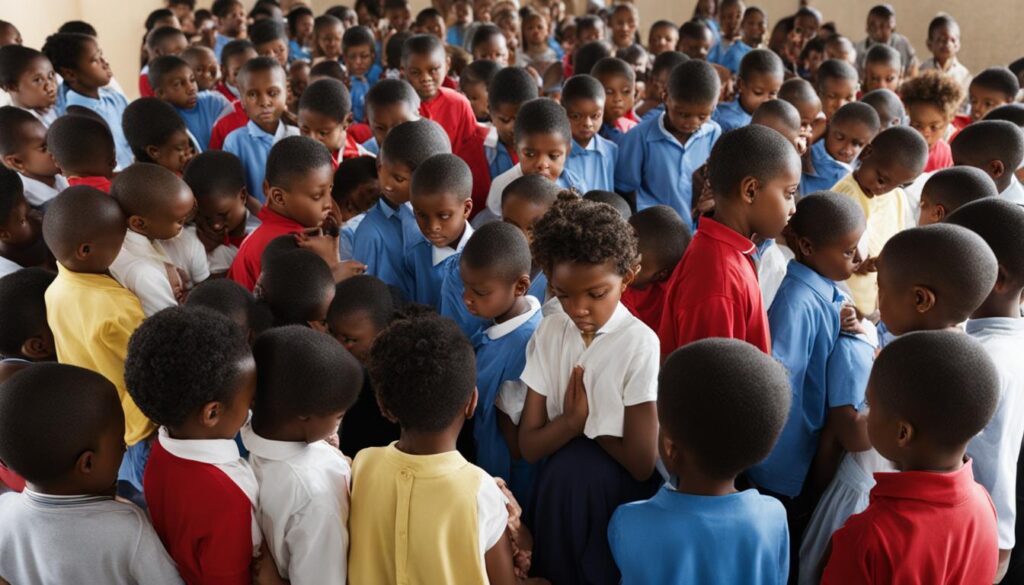
The table below summarizes key findings from various polls and surveys regarding public opinion on prayer in schools:
| Poll/Survey | Year | Support for Prayer in Schools | Opposition to Prayer in Schools |
|---|---|---|---|
| Pew Research Center | 2019 | 41% | 52% |
| Gallup | 2018 | 61% | 37% |
| ABC News/Washington Post | 2016 | 61% | 38% |
These statistics offer a glimpse into the diverse range of perspectives on prayer in schools and highlight the ongoing complexity of this issue. As public opinion continues to shift and evolve, it is likely that the debate surrounding prayer in schools will persist for years to come.
The Evolution of Religious Freedom in Schools
The removal of prayer from schools has sparked an evolution in the interpretation of religious freedom in educational settings. While the Supreme Court’s rulings have restricted state-sanctioned prayer in public schools, they have also established guidelines to protect the rights of students and faculty to express their religious beliefs.
One important aspect of this evolution is the recognition of students’ right to engage in voluntary, student-led prayer or religious activities on campus. As long as these activities are not endorsed or organized by school authorities, they are generally protected by the First Amendment.
Additionally, schools are required to provide reasonable accommodations for students’ religious practices, such as allowing them to wear religious attire or observe religious holidays. This ensures that students can freely exercise their faith while attending public schools.
However, the interpretation of religious freedom in schools continues to be a topic of debate and legal contention. The line between permissible student expression and unconstitutional endorsement of religion remains blurry, leading to ongoing legal battles and varying policies across different school districts.
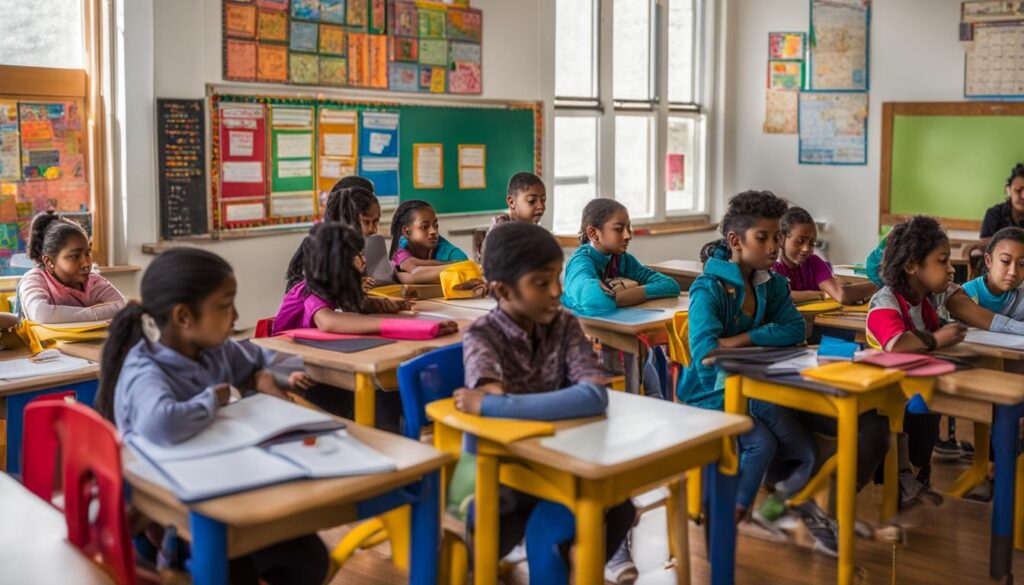
The Importance of Religious Freedom in Schools
“Religious freedom is a cornerstone of our democracy and should be respected in all spheres of life, including public schools. It allows students to learn about different faiths, express their own beliefs, and develop a sense of tolerance and understanding towards others.”
By striking a delicate balance between religious freedom and the goal of maintaining a secular learning environment, schools play a crucial role in fostering diversity and inclusivity. With ongoing discussions and legal developments, the future of religious freedom in schools will continue to be shaped by new court cases, legislative actions, and changing societal attitudes.
The Continued Debate and Future of Prayer in Schools
The debate over prayer in schools has been ongoing for decades and shows no signs of abating. With conflicting opinions and legal battles, the future of prayer in schools remains uncertain. Advocates for prayer argue that it is a fundamental aspect of religious freedom and moral education, while opponents maintain that it infringes upon the separation of church and state.
Currently, the Supreme Court’s rulings prohibit school-sponsored prayer and religious activities in public schools. However, there have been ongoing efforts to challenge and modify these restrictions. Proposed legislation seeks to provide more leeway for prayer in schools, aiming to accommodate the diverse religious beliefs of students without violating the constitutional rights of others.
It is important to note that the future of prayer in schools will depend on the balance between religious freedom and the secular nature of public education. As the cultural and religious landscape continues to evolve, so too will the discussions and legal battles surrounding prayer in schools. The outcome of these debates will shape the educational experience for future generations.
Ultimately, the future of prayer in schools hinges on the delicate task of finding common ground and respecting the rights and beliefs of all individuals within the educational system. It is a complex issue that requires careful consideration and a thoughtful approach to ensure that students’ religious freedoms are upheld while maintaining the integrity of public education. The ongoing debate and legal challenges surrounding prayer in schools will continue to shape the landscape of American education in the years to come.
Conclusion
The removal of prayer from schools marked a significant turning point in American education. The Supreme Court’s rulings on this issue have shaped the interpretation of the First Amendment and set the precedent for the separation of church and state in public schools.
Supporters and opponents of prayer in schools continue to engage in a heated debate, highlighting the delicate balance between religious freedom and the need for a secular learning environment. Despite ongoing legal battles and proposed legislation, the current restrictions on prayer in schools remain in place.
Looking ahead, the controversy surrounding prayer in schools will undoubtedly continue to be a topic of discussion. The evolving landscape of religious freedom in educational settings and the potential future directions of this debate will play a crucial role in shaping the education system in the years to come.
FAQ
When was prayer taken out of schools?
Prayer was officially removed from schools in the mid-20th century following landmark Supreme Court rulings in 1962 and 1963.
What role did the Supreme Court play in prayer in public schools?
The Supreme Court played a pivotal role in the removal of prayer from schools through landmark rulings such as Engel v. Vitale and Abington School District v. Schempp.
What is the debate over prayer in schools?
The debate centers around issues of religious freedom, the separation of church and state, and the rights of religious minorities in the public school system.
What impact did the removal of prayer have in schools?
The removal of prayer sparked legal challenges, protests, and a decline in religious influence in public schools. It also led to the rise of alternative education options.
What is the historical context of prayer in education?
Prayer has a long history in American education, with its origins dating back to early American society and its gradual integration into the education system.
What is the concept of separation of church and state?
The concept of separation of church and state is central to understanding the removal of prayer from schools. It refers to the constitutional principle that ensures a secular public education system.
What is public opinion on prayer in schools?
Public opinion on prayer in schools is divided, with different perspectives and attitudes evolving over time. Various polls and surveys have been conducted to gauge public sentiment on the issue.
How has religious freedom in schools evolved?
The removal of prayer from schools has led to an evolution in the interpretation of religious freedom in educational settings. This section explores the legal developments that have shaped the rights of students and faculty to express their religious beliefs.
What is the continued debate and future of prayer in schools?
The debate over prayer in schools continues to be a contentious issue, with ongoing legal battles and proposed legislation seeking to change the current restrictions. This section highlights potential future directions and implications for the education system.
What is the conclusion regarding the removal of prayer from schools?
The removal of prayer from schools marked a significant turning point in American education. The Supreme Court’s rulings have shaped the interpretation of the First Amendment and set the precedent for the separation of church and state in public schools.
Source Links
- https://faitheday.medium.com/no-church-in-the-morning-unpacking-the-rise-and-fall-of-christian-media-486f093d7c31
- https://www.jacksonville.com/story/news/columns/mark-woods/2022/04/29/florida-courthouse-naming-controversy-involves-justice-joseph-hatchett-duval-school-prayer-case/7433218001/
- https://scholarship.law.gwu.edu/cgi/viewcontent.cgi?article=2906&context=faculty_publications


